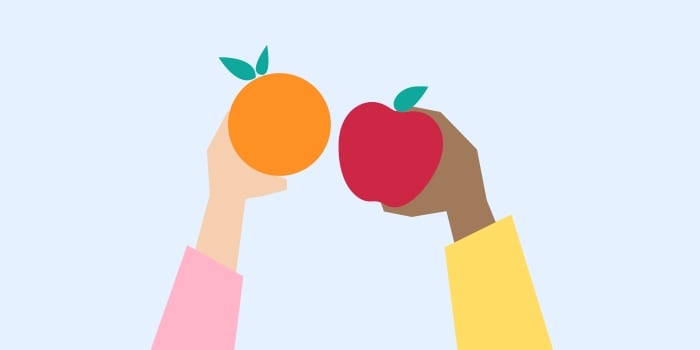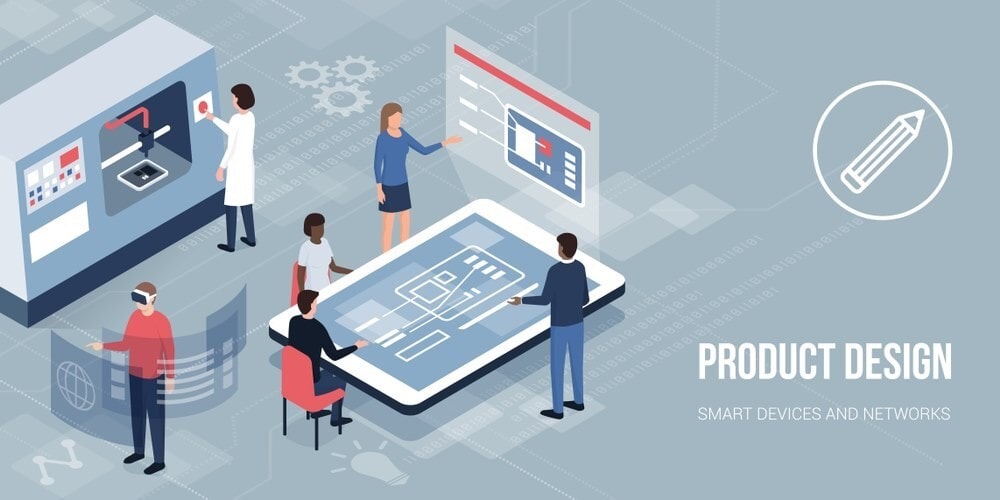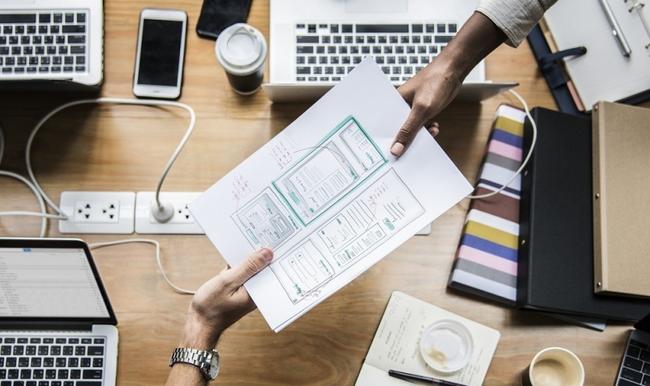Product Design vs UX Design – Similarities and Differences

When it comes to creating great products, design becomes the most important feature. We have entered a stage where product design is dominated and driven-product design sets the company apart and is a real advantage over competitors. In recent years, the design industry has evolved a lot, and there are now many designers with different responsibilities: UX and product designers. However, "What is the difference between their job roles?" has always been a common question in the design industry.
Both these titles have one thing in common-they all design how users interact with the product. But they are doing different things to achieve this unified goal. Now, let us try to analyze what each job title really means, and then see why it is a logical development to evolve from UX designer to product designer in the era of modern technology.
"Design is dedicated to the question of how things work, how they are controlled, and what exactly the interaction between people and technology looks like. If the thing is done well, then great, enjoyable products are created."
- Don Norman, The Design of Everyday Things
What is Product Design?

The modern world is shaped by desktop tools, mobile apps, web apps, platforms, software ecosystems, and online services. They are almost omnipresent and support us in our personal and professional everyday life. Whether in the office, at home on the laptop or on the tablet, in your pocket, or on your wrist - such products are our constant companions.
There is no doubt that digital products are an integral part of our world. Product design helps you to prepare your digital product (whether existing or new), with a focus on business aspects and user needs. This allows your team to design and expand more successfully. Product designers work in a very diverse industry in which they also have to demonstrate their ability to work in a team.
Product designer is a general term used to describe the designers who are involved in creating the entire product. Many product designers think they are designers of design experience. This means that when it comes to how certain functions should work or how certain UI controls should be displayed, product designers are the ones who give insight to UX designers and UI designers.
As a product designer, you have to dedicate yourself to the development of products. You also have to take care of drafting and design. As a product designer, you are, so to speak, the interface between people and things. You design functions for products and also take creative and economic aspects into account. You deal intensively with technologies and trends, but also with materials, design, and colors.
How to become a product designer?

Product designers need the necessary technical know-how and artistic skills in order to be able to do their job well. You will usually develop this ability in the course of a corresponding degree. You can study product designing at various universities. Many degree programs already focus on a major in the Bachelor's or Master's degree or offer their degree programs in combination with other fields of study. Your study opportunities as a future product designer include general product design and industrial design as well as technical product development, design and innovation, material culture, product, and technical communication as well as sustainability and product design.
Requirements:
1. Technical know-how
2. Creativity
3. Analytical thinking
4. Communication skills
5. Problem-solving skills
6. Teamwork
7. Researching skills
What is UX Design?

UX design is responsible for the function, the adaptability of the product, and the emotions it evokes in users. The clearer the interface, the easier it is for the user to get the result and take the targeted action. UX is the experience of working with the interface. User experience depends on various components: site architecture, graphic design, clear text, and responsiveness of the interface to specific user actions. Because user experience is abstract, UX design involves learning about their habits, prototyping behavior, and testing. All this work is done by the UX designer.
The first Macintosh is one of the shining examples of the work of UX designers. The idea of using windows instead of the command line existed until 1984, but it was Apple's designers who made the graphical interface widely available.
Some designers think that UX is only about how the site or application works. In fact, the user experience is not limited to this. For example, if a client left a request, but did not receive a confirmation SMS or a call from a manager, these are symptoms of bad UX.
"UX does not end with a beautiful and understandable form on the site. UX is the user's journey from the entry point to exit point, from point A to point B."
- SERGEY POPKOV (Chief Designer of AIC)
What does a UX designer do?

UX designers mainly care about how the product feels, and their goal is to be more efficient and concise. UX designers look at the design from the perspective of users' thinking and discover potential problems through the following points:
1. Sort out various user scenarios and build interactive modes
2. Take various tests and observe what users do (such as laboratory usability studies, eye tracking, A/B testing, email surveys, etc.)
3. Build the prototype interface, create the logic of the product through the wireframe
The UX designer spends most of his time prototyping. On the basis of the knowledge gained, he now tries to change the product or the plans in such a way that a better user experience results. The UX designer often has to use many different tools in order to achieve the desired result.
In the end, the user feedback comes into play. The prototypes developed by the UX designer are presented to test customers, work colleagues, and other UX designers and evaluated by them. Often times, a design needs many development rounds before both the UX designer and the customer are satisfied.
If you enjoy working in teams, want to combine your psychological interests with your own creative ideas, and enjoy being around people who think in terms of products and business models, the UX designer is the right job for you.
What are the similarities between UX Design and Product Design?
Product design is the evolution of user experience design. Many people believe that UX designers are more focused on user needs, while product designers are more focused on the combination of business needs and user needs. But in fact, this idea is wrong! User experience designers also need to focus on business requirements, and they also need to incorporate business requirements into the overall design.
The frequency of the following keywords is roughly the same:
- Teamwork: collaboration, communication, cross-function, leadership
- Design methods: design principles, design process, user flow, prototype, mobile/web, wireframe
- Thinking mode: concept, brand new, opportunity, innovation
- Research categories: user testing, user research, usability
- Commercial: Stakeholders, Marketing
What is the difference between Product Design and UX Design?
In the five or six years after 2000, the titles of people engaged in interaction design-related work are usually information architects or interaction designers, and some are called usability analysts. When the time came around 2010, the term UX, or user experience, became a buzzword, and from then on, UX designer/user experience designer has become the most important job title on top of interaction design practitioners.
On the other hand, if you had the title "Product Designer" 10 years ago, then you were probably a designer or industrial designer responsible for designing the appearance of physical products. However, around 2015, due to the popularity of SaaS (software as a service) products, we noticed that the title of "product designer" is still applied to designers responsible for interaction in such products.
Therefore, since 2015, the frequency of the term "product designer" has increased. This position is difficult to distinguish from "user experience designer", and confusion has begun to appear. Many people try to explain this difference.
1. Difference in terms of functions
-UX Design: design new things, or redesign existing things;
-Product Design: follow an existing product and iteratively develop over time;
2. Difference in terms of design constraints
-UX Design: How to achieve the best possible user experience with prioritized time and development resources;
-Product Design: How to gradually approach the ideal user experience in subsequent version iterations;
3. Difference in terms of usability
-UX Design: How to make it easier for users to get started;
-Product Design: How to make it easier for existing users to understand new features and migrate to new features;
4. The sense of accomplishment and fun you can enjoy as a worker mainly include:
-UX Design: diversify, propose a new method of user-centered design to solve a series of problems.
-Product Design: continuity, gradually evolve over time, and gradually develops and changes to be a more ideal Experience.
Conclusion
As you can see, UX and product designing having a high degree of similarity in actual functions and applications, but they are obviously different in execution and thinking. And also the roles of UX and product designer are slightly different. User experience designers will seek various possibilities to achieve successful products in their work, while product designers will, over time, study in-depth ways of product upgrade and evolution.
But of course, there are definitely exceptions to the situations I mentioned above, because they do not completely meet all environments. The collaboration between product designers and UX designers, their constant interaction, mutual understanding are the keys to creating a successful product or service. But I hope that this article and the information I have compiled will eventually relieve the confusion of most people.

